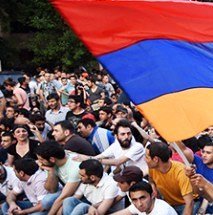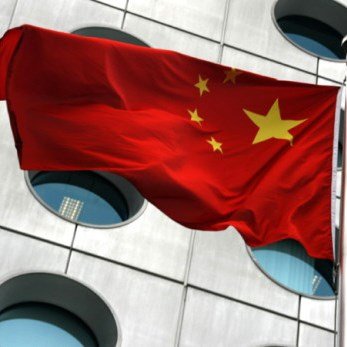The dramatic protest mobilization in Armenia last week illustrates how much any social movement is an emotional rollercoaster. The protest was triggered by a 17 percent increase in electricity rates. The price hike would surely hurt many impoverished groups in Armenian society. The youthful urbane protesters, however, did not seem the likeliest victims. Theirs was a matter of principle expressed in the angry, simple name of the new social movement: No to robbery!
To complicate matters, the Armenian electric company is a subsidiary of Russia's state-owned energy holding RAO UES. In recent years, Russian capital has come to own much of Armenia’s very modest economy.
From the right-wing politicians in Moscow, one could immediately hear ominous suggestions that the events in Yerevan could be in fact the beginning of another American-instigated color revolution, which they see as having happened in Ukraine last year.
If there were any parallels with the Euromaidan, however, they perhaps lie in the original “spark”: a group of young activists attempting to picket the entrance to the Presidential Palace were dispersed by police water cannons. Over two hundred were detained for administrative misdemeanors and released a few hours later. Ironically, the use of water cannons proved incendiary for reasons nobody could fully explain. The birth of social movements remains one of the biggest puzzles to social scientists.
Thousands of people rushed to Marshal Bagramyan Prospekt to protect the protestors and shame the police. To everyone’s enormous surprise, the rally ended up comparable to the epic 1988–1990 mobilizations for Karabagh in the heady days of Gorbachev’s perestroika. The snowballing effect was much in evidence: as more people gathered in the center of Yerevan, more people were attracted by the news and to the cause. Mobile phones played a big role. But Yerevan is not that big anyway, and the central location of both the presidency and the parliament on the main street meant that the disruption was immediately felt during the rush hour.
The protesters looked young and romantic. They could not have witnessed the mobilizations of perestroika. But the more senior onlookers felt some mixed feelings and tenderness for the activists. The youth and romanticism of the protestors suggested that they were quite unlikely moved by such a mundane concern as the price of utilities.
Yet protests develop in waves, and this recent surge has been prepared by a series of recent public mobilizations: on environmental issues, preservation matters in the old town, and, above all, attempts to raise the fares of the "marshrutka" minibuses. City-level campaigns such as these passed unnoticed outside Armenia but they surely played critical roles in setting the scene for the present mobilization.
The issue of minibus fares emerged two years ago and involved all city residents since the minibuses are the main means of public transportation. This issue established important precedents and rituals of solidarity: Internet announcements, symbolic group dancing at bus stops, encouraging passengers to refuse paying the new fares, and shaming bus drivers who charged them. One development was that drivers of private cars would approach bus stops and offer free rides while loudly announcing where they were heading. It thus became an inter-generational campaign involving almost all classes of society.
The city had fun for a few days, and then the mayor of Yerevan had to intervene publicly. He asked the minibus owners to account for their hiking of prices. This was a good question because the minibuses were the same ancient wrecks held together by wires and occasionally embellished with shreds of old oriental rugs.
All in all, the protest movement last week began with an enormous emotional charge that was mightily helped by the police use of water cannons. The city instantly felt in solidarity with those protesting downtown. I did not hear a single complaint about traffic disruptions. Curiously, the police chief became his own spokesman saying that the protestors are certainly violating the law but their actions carry no social danger. Later he even said that "they are fighting for all of us." Thus, it became clear that Yerevan was not repeating Kyiv. But, still, where was this heading?
RFE/RL and the internet TV channel "Arachin" began providing around-the-clock coverage that could be heard from the open windows of offices and apartments and nearly every taxi cab. This reminded me of 1989. In a city of about one million residents, the focus of attention was definitely on the protest downtown, and the sentiment was sympathetic (the phrase, “they are fighting for all of us there,” could be heard pervasively).
Thus, the actual number of protesters did not matter that much as long as a few hundred youth manned the barricades of the chained trash cans. Many thousands could have joined in thirty minutes if necessary. Also, this being a time of pleasant early summer evenings, many people opted to spend time at nearby downtown cafes. The Internet surely helped expand the audience—probably to several hundred thousand, including the diaspora. Speaking of which, one “socialist” suggestion, to nationalize under public supervision Armenia's utilities, became popularized by the California-based rock musician Serj Tankian, the legendary leader of the band System of a Down.
The protest movement seemed to have achieved its goal this past weekend when President Sargsyan promised that the government would pay the new electricity prices from its security budget while the issue is re-negotiated. To the credit of Armenia’s state leaders, they prudently resisted blaming any of it on foreigners and instigators. Did they really feel the mood of the nation, after all? With Sargsyan’s announcement, people really hit the streets dancing.
The protest movement had internal challenges. Even at its peak, when there was an estimated 25-40 thousand people on the street, it was not clear who would make the keynote speeches, who would manage the queue of speakers, and what exactly the issues raised should be. The lack of organization and spontaneity that earlier was part of the movement's pride and strength, and which kept it immune from politicking, became a liability once real bargaining actually started.
And then the movement split. Whatever leaders emerged over the previous several days, to the extent that anyone emerged at all, they failed to steer adeptly. A call to move the rally behind the historical Opera House and away from traffic was followed at best by 10 percent of the crowd, and maybe only 3 to 5 percent. The majority remained at Bagramyan Prospekt. Some joy diminished and frustration grew as the newly-made moderates behind the Opera House felt irrelevant, while the leaderless diehards at the barricades yearned for some kind of action that never came. Now, the whole movement seems to be ending, though not quite as effortlessly as it started.











